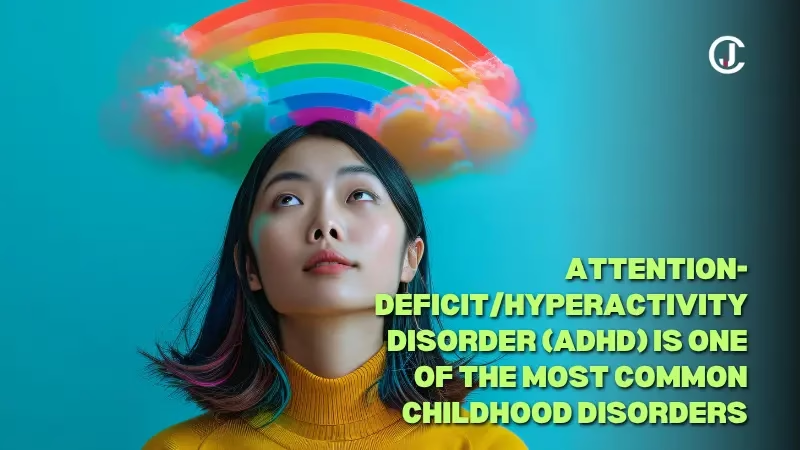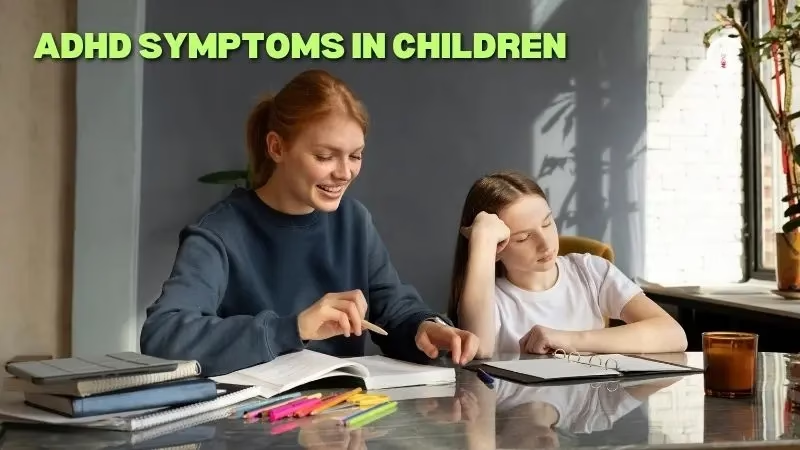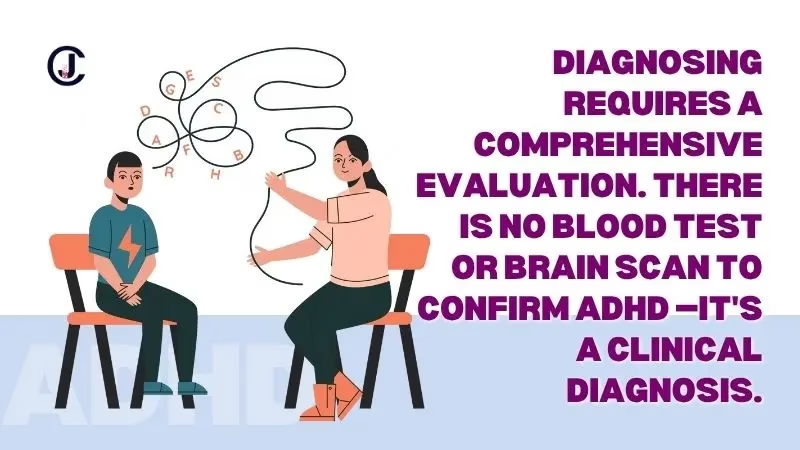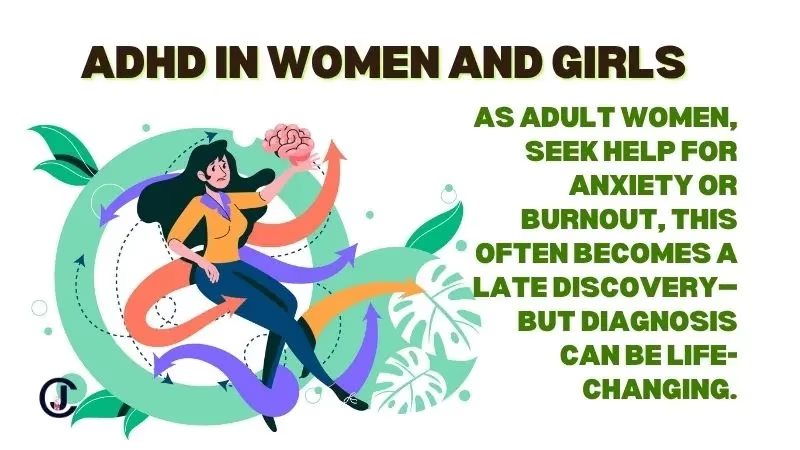Table of Contents
What Is ADHD?
Attention-deficit/hyperactivity disorder (ADHD) is one of the most common childhood disorders. This being a developmental disorder consists of a continuing pattern of one or more among the scattered categories of symptoms:
- Inattention: difficulty in paying attention, keeping on task, or staying organized;
- Hyperactivity: moving about, including, on occasions, inappropriate times, restless feelings, or excessively talking;
- Impulsivity: interrupting, intruding on others, or being unable to wait for one’s turn.
Certain behaviors might be next observed in everyone occasionally. However, for ADHD persons, the behaviors are so frequent to occur in multiple settings like school, home, with a few in law, or friends. As a chronic and disabling disorder, it is said to have multiple impacts on the life of one person, including accomplishments in academics and profession, interpersonal relationships, and daily functioning (Harpin, 2005).
This can take a toll on self-esteem and social functioning in children if left undiagnosed and untreated (Harpin et al., 2016). Adults affected with ADHD might view themselves as worthless and become hypersensitive to criticism or sometimes self-critical because of the higher criticism levels placed on them throughout life (Beaton, et al., 2022). Of note, ADHD presentation and assessment in adults are different; this page deals with the one pertaining to the children.
Types of ADHD
This is not a one-size-fits-all diagnosis. The condition presents in three main types:

Predominantly Inattentive Type (formerly known as ADD)
People with this type may:
- Have trouble focusing or organizing tasks
- Forget things easily
- Avoid tasks that require sustained mental effort
- Seem to daydream or appear “checked out”
This type is often missed, especially in girls and adults.
Predominantly Hyperactive-Impulsive Type
These individuals may:
- Fidget constantly
- Struggle to sit still
- Interrupt conversations
- Act without thinking
This is the type most commonly identified in young boys.
Combined Type
This is the most common form of ADHD, involving a mix of both inattentive and hyperactive-impulsive symptoms. Knowing the type helps doctors create personalized treatment plans.
Unspecified Presentation
This is when you have severe symptoms that interfere with daily life, but your symptoms don’t meet the official criteria for the types listed above. In this case, providers assign “unspecified ADHD” as the diagnosis.
Providers also use the terms mild, moderate and severe to describe how much symptoms affect your daily life
Common Symptoms

ADHD Symptoms in Children:
- Easily distracted
- Frequent daydreaming
- Difficulty staying seated
- Blurting out answers
- Problems with following instructions
- Forgetting daily tasks (e.g., homework, chores)
ADHD Symptoms in Adults:
- Disorganization
- Poor time management
- Chronic lateness
- Impulsive decisions (e.g., shopping sprees)
- Difficulty finishing tasks
- Mood instability and frustration
While hyperactivity often decreases with age, inattention and executive function difficulties can persist. Adults may struggle with relationships, job performance, and self-image due to undiagnosed ADHD.
Also Read: Mental Health Matters: 5 Powerful Reasons Masculinity Hurts Men
The Causes
ADHD is genetic. In this scenario of existence, a child is born with peculiar changes in the genes, imparting some neurodivergence in their brain development. Most of the time, the gene changes that cause this are passed down within biological families. In essence, children with ADHD generally have biological parents or siblings affected by the same condition.
Researchers continue to investigate the nature of it in the brain. So far, it appears that the frontal lobe of your child’s brain with ADHD is wired in a way that makes using directed attention more challenging. Directed attention refers to focusing on whatever does not interest someone very much.
We utilize directed attention when we are planning, multitasking, and engaging in problem-solving activities (executive functions). It often demands so much well-directed attention, especially when there stands something more exciting around the corner for distraction.
If a child has ADHD, it takes additional energy to draw their attention toward something they have to do. After a long day at school, your child might resist something that seems pretty easy — like hanging up a coat or backpack. They simply don’t have the attention to concentrate on these “simple” tasks.
Then this kid of mind is also a little better than most neurotypical youngsters at using automatic attention: that type of focus used when looking at something interesting to us. This type of attention enables what is termed hyperfocus: being able to “get in the zone” and do something for hours on end. This child might use hyperfocus to become quite skilled at a particular hobby or game or to achieve certain goals.
How Is It Diagnosed?
Diagnosing requires a comprehensive evaluation. There is no blood test or brain scan to confirm this—it’s a clinical diagnosis.

The Diagnosis Process Includes:
- Detailed interviews with the patient and family
- Behavior rating scales and standardized ADHD questionnaires
- Review of medical, educational, and developmental history
- Observation of behavior in different settings (especially for children)
Evaluation is usually done in the U.S. by a psychologist, psychiatrist, pediatrician, or neurologist. For schooling-age children, teachers often play an essential role in symptom identification.
For adults, self-reporting scales are used and clinical interviews are conducted. The procedure is thorough so that other disorders, such as anxiety or learning disabilities, are not confused with ADHD.
Management and Treatment
We can classify the treatments into two broad categories: behavioral interventions (which focus on teaching practical skills) and medications. The selected treatment course depends on the age of the individual and their unique needs.
The following are the common recommendations provided for children:
- Parent training. Therapists facilitate parents to help build their child’s strengths and ameliorate behaviors inhibiting them. For example, parents learn how to develop a routine for a child, enhance behaviors, and address negative behaviors.
- Social skills groups. These groups may be beneficial to your child. They usually run one to two hours per week over six to twelve weeks, teaching your child in a supervised environment about peer interaction skills.
- Medications (pharmacotherapy). ADHD medications improve your child’s ability to use directed attention, in turn improving symptoms and — more importantly — their quality of life and relationships. Providers monitor your child to see how the medicines are working and whether your child has side effects. They adjust medication types and doses as needed.
The goal of this treatment is to improve symptoms as your child goes about their daily life. For younger children (ages 4 and 5), providers recommend parent training before trying medication. Usually, the best treatment for older kids, adolescents and adults is a combination of behavioral interventions and medication.
Coexisting Conditions
ADHD rarely travels alone. Many individuals face coexisting mental health challenges, including:
- Anxiety Disorders
- Depression
- Oppositional Defiant Disorder (ODD)
- Autism Spectrum Disorder
- Learning disabilities
- Substance use disorders (especially in undiagnosed adults)
A proper treatment plan must address all coexisting conditions.
School and Workplace Settings
In classrooms and offices, ADHD can present significant challenges—but with the right support, success is absolutely possible.
In School:
- 504 Plans or IEPs provide legal academic accommodations.
- Extra time on tests, preferential seating, and task chunking can help.
- Teachers can use checklists, timers, and hands-on tasks.
In the Workplace:
- ADHD adults may benefit from:
- Remote or hybrid work flexibility
- Written instructions and deadlines
- Time-blocking strategies
- Workplace accommodations under the ADA
ADHD in Women and Girls
ADHD is historically underdiagnosed in females. Girls are more likely to be quietly inattentive than outwardly hyperactive, leading to misdiagnosis or late diagnosis.

Signs in women and girls:
- Daydreaming or zoning out
- Anxiety and perfectionism
- High emotional sensitivity
- Trouble managing time and priorities
As adult women seek help for anxiety or burnout, this often becomes a late discovery—but diagnosis can be life-changing.
ADHD in the Digital Era
Technology has reshaped how we experience ADHD:
Pros:
- Productivity apps such as Todoist, Trello, and Forest
- Platforms for coaching and therapy are ADHD-specific
- Online ADHD community support
Cons:
- Doomscrolling, never-ending notifications, and multitasking compromise focus
- Social media overloads dopamine or trigger comparison anxiety
Setting screen time limits and boundaries around tech use is crucial.
Daily Management Tips
Living well with it is about understanding your brain and working with it. Here are some real specific strategies to consider:
- Break big tasks into smaller steps
- Use visual calendars and alarms
- Exercise to increase focus
- Maintain consistent times for waking and going to sleep
- Indulge in mindfulness or meditation time
- Celebrate achievements, however small
The aim is structure and less overwhelm.
Final Thoughts: ADHD Is Not a Deficit—It’s a Different Way of Thinking
This is not something about bad morals, discipline, or something to grow out of. It is a particular kind of neurological wiring that, if understood and managed, may result in a remarkable ability for creativity, intuition, and resilience.
Know that are not alone, whatever you may be-a parent or an affiliated scholar, working professional, or newly diagnosed adult. There are tools, resources, and communities that can hopefully help you flourish with ADHD.
FAQs
Q1: Is ADHD a disability in the USA?
Yes, ADHD is listed in the Americans with Disabilities Act (ADA) and does qualify, therefore, for accommodations in the workplace or school.
Q2: May an adult be diagnosed with ADHD later in life?
Absolutely. Many adults—especially women—get diagnosed in their 30s and 40s, and sometimes even later.
Q3: Natural remedies for ADHD?
Physical exercise, omega-3, sleep, and mindfulness are all recognized to support the management of ADHD and are complementary to any medical treatment.

